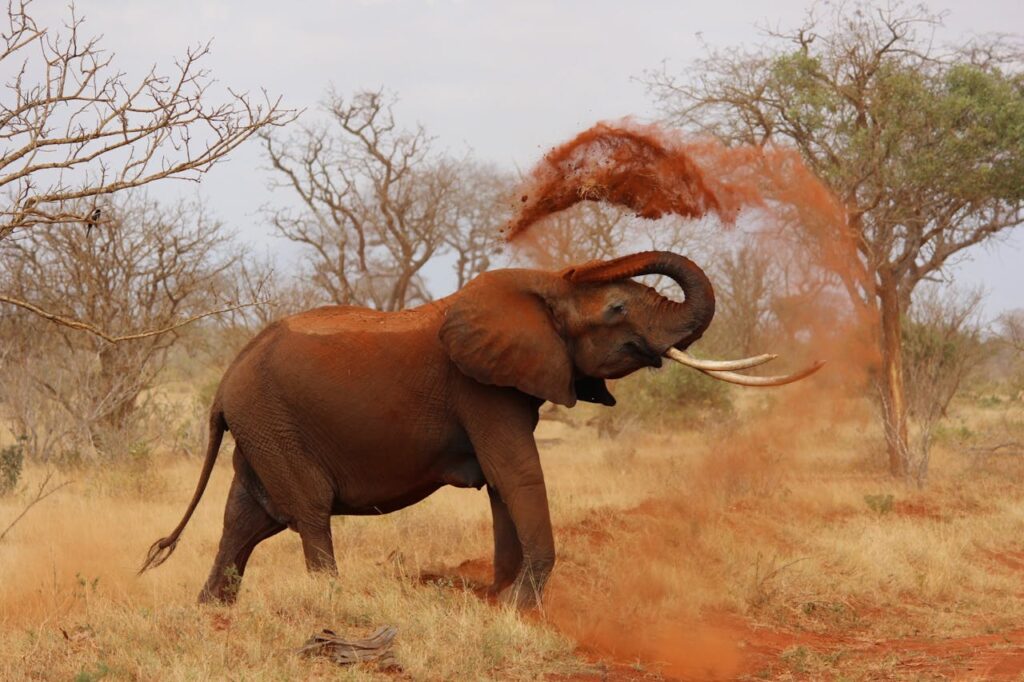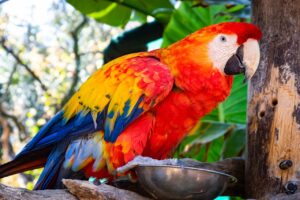
Explore & Play
Discover interesting topics and solve the accompanying crossword puzzle.
African Crossword | Africa’s Wonders
Table of Contents
Welcome to our exploration of Africa! To enhance your experience, we invite you to start with the African crossword puzzle at the beginning of this blog post. It’s a fun way to test your knowledge and set the stage for the insights you’ll gain. If you’re new to the topic or need some background information, feel free to dive into the article first and then come back to solve the crossword. Enjoy the journey through Africa’s wonders!
African Crossword
You can either fill in the crossword puzzle directly on this page or click the button in the bottom right corner to print it for free.

Exploring Africa: A Journey Through Its Diverse Landscapes and Cultures
Africa, a continent brimming with diverse landscapes and rich cultural heritage, offers an array of experiences that captivate the senses and ignite the imagination. From its vast deserts to its lush rainforests, and from its historical landmarks to its vibrant cultures, Africa presents a tapestry of wonders. In this article, we embark on a journey through Africa, exploring its majestic geographical features, iconic landmarks, cultural richness, historical significance, and ongoing conservation efforts. Along the way, we will encounter many terms featured in a crossword puzzle designed to test your knowledge and enhance your understanding of this remarkable continent.
1. Majestic Geographical Features
From the sweeping sands of the Sahara to the lush rainforests of the Congo Basin, Africa’s geographical diversity shapes its unique environment and wildlife.
1.1 The Sahara Desert
The Sahara Desert, the world’s largest hot desert, stretches across North Africa and is renowned for its sweeping sands and ancient history. Covering more than 9 million square kilometers, the Sahara’s arid landscape is characterized by dunes, rocky plateaus, and occasional oases. It is home to a variety of adapted flora and fauna, including the resilient Sahara antelope and the elusive fennec fox. The desert’s extreme temperatures and vast expanses create an otherworldly atmosphere, making it one of Africa’s most iconic features.
1.2 The Nile River
Flowing from the heart of Africa to the Mediterranean, the Nile River is not only the longest river on the continent but also a lifeline for the civilizations it nourishes. Spanning approximately 6,650 kilometers, the Nile has historically supported agriculture, trade, and cultural development. Its annual flooding deposited fertile silt along its banks, transforming the surrounding areas into productive farmland. Today, the Nile continues to be a critical resource for millions, providing water, transportation, and energy.
1.3 Mount Kilimanjaro
Towering majestically over Tanzania, Mount Kilimanjaro stands as Africa’s highest peak, attracting climbers and adventurers from around the world. This dormant stratovolcano reaches an elevation of 5,895 meters above sea level and features three volcanic cones: Kibo, Mawenzi, and Shira. Kilimanjaro’s snow-capped summit contrasts sharply with the surrounding savanna, creating a dramatic visual effect. Its diverse ecosystems, ranging from tropical rainforests to alpine meadows, offer a unique opportunity for exploration and study.
1.4 The Great Rift Valley
The Great Rift Valley, a geological marvel stretching from Syria to Mozambique, showcases Africa’s dynamic and evolving landscape. This extensive rift system, formed by tectonic activity, is home to a range of geological formations, including volcanic mountains, deep lakes, and fertile highlands. The valley is renowned for its rich fossil deposits, which provide valuable insights into human evolution. Additionally, the Great Rift Valley’s diverse environments support a wide array of wildlife, from elephants and giraffes to flamingos and hippos.
1.5 The Serengeti
Renowned for its incredible wildlife and annual migrations, the Serengeti is a jewel of East Africa’s savanna. Spanning approximately 30,000 square kilometers across Tanzania and Kenya, the Serengeti is famous for the Great Migration, during which millions of wildebeest, zebras, and gazelles traverse the plains in search of fresh grazing grounds. This event, one of the most spectacular wildlife phenomena on Earth, draws visitors from around the globe. The Serengeti’s rich biodiversity also includes predators such as lions, cheetahs, and hyenas.
1.6 The Congo Basin
In Central Africa, the Congo Basin stands as a lush rainforest teeming with biodiversity and crucial to the global climate system. Covering about 3.7 million square kilometers, the Congo Basin is the world’s second-largest tropical rainforest. It plays a vital role in regulating the global climate by absorbing large amounts of carbon dioxide. The basin is home to diverse species, including endangered mountain gorillas, forest elephants, and the Okapi, a unique relative of the giraffe. The rainforest also supports numerous indigenous communities who depend on its resources for their livelihoods.
1.7 The Zambezi River
The Zambezi River, known for the awe-inspiring Victoria Falls, plays a vital role in the ecosystems and economies of Southern Africa. Flowing through six countries, the Zambezi River is the fourth-longest river in Africa, with a length of approximately 2,574 kilometers. Victoria Falls, one of the largest and most famous waterfalls in the world, is a major tourist attraction and a key feature of the river. The Zambezi also supports agriculture, hydroelectric power generation, and diverse wildlife habitats.
1.8 The Kalahari Desert
The Kalahari Desert, a semi-arid expanse in Southern Africa, is home to unique wildlife adapted to its harsh conditions. Spanning parts of Botswana, Namibia, and South Africa, the Kalahari Desert is characterized by its red sands, sparse vegetation, and occasional salt pans. Despite its arid nature, the Kalahari supports a variety of species, including the hardy Kalahari Lion, meerkats, and the endemic Kalahari Springbok. The desert’s seasonal rains bring temporary life to the region, creating a dramatic contrast between drought and abundance.
2. Iconic Landmarks and Cities
Africa’s landmarks and cities are rich with history and offer a glimpse into the continent’s storied past and vibrant present.
2.1 Victoria Falls
Victoria Falls, one of Africa’s most famous natural wonders, is renowned for its breathtaking beauty and thundering waters. Straddling the border between Zimbabwe and Zambia, Victoria Falls is the largest waterfall by volume in the world, with a width of 1,708 meters and a height of 108 meters. The falls are a UNESCO World Heritage site and a major tourist destination, drawing visitors who come to witness the impressive cascade and experience the surrounding rainforest.
2.2 The Pyramids of Giza
The Pyramids of Giza, ancient marvels of engineering and tombs of Pharaohs, symbolize the grandeur of ancient Egypt. Located on the Giza Plateau near Cairo, these pyramids were constructed as burial sites for Pharaohs and their consorts. The Great Pyramid of Giza, the largest and most famous, was built for Pharaoh Khufu around 2580-2560 BCE. The precision and scale of these structures continue to captivate historians and archaeologists, offering insights into ancient Egyptian society and technology.
2.3 Cape Town
Cape Town, a vibrant city in South Africa, is celebrated for its stunning landscapes, including Table Mountain and its diverse cultural scene. Positioned on the southwestern coast of the continent, Cape Town is known for its picturesque harbor, beautiful beaches, and vibrant arts and food scenes. Table Mountain, a flat-topped mountain that overlooks the city, is one of South Africa’s most iconic landmarks. The city’s rich history, combined with its natural beauty, makes it a popular destination for tourists and locals alike.
2.4 Mombasa
Mombasa, Kenya’s major coastal city, holds historical significance and serves as a gateway to the Indian Ocean. As Kenya’s second-largest city, Mombasa has a rich cultural heritage influenced by various cultures, including Swahili, Arab, and Portuguese. The city is known for its bustling port, historic architecture, and beautiful beaches. Key attractions include Fort Jesus, a 16th-century fort built by the Portuguese, and the vibrant Old Town, which showcases Mombasa’s historical charm.
2.5 Mombasa Tusks
The iconic Mombasa Tusks, a landmark celebrating the city’s centenary, are a testament to Mombasa’s rich heritage. These large tusks, made of aluminum, were erected in 1952 to commemorate the visit of Queen Elizabeth II to Mombasa. Located at the entrance to the city, the tusks have become a symbol of Mombasa and a popular photo opportunity for visitors. Their distinctive design and historical significance reflect the city’s blend of tradition and modernity.
3. Cultural Richness and Diversity
Africa’s cultural heritage is as varied as its landscapes, encompassing traditional practices, languages, and artistic expressions.
3.1 The African Savanna
The African Savanna, with its expansive grasslands and scattered trees, is a key habitat for numerous species and a symbol of the continent’s natural beauty. This biome, characterized by its seasonal rainfall and wide-open spaces, supports a diverse array of wildlife, including elephants, lions, and giraffes. The savanna’s dynamic environment, marked by periodic droughts and floods, creates a unique ecosystem that has shaped the behaviors and adaptations of its inhabitants.
3.2 Madagascar
Madagascar, an island nation with a unique ecosystem, is home to flora and fauna found nowhere else on Earth. Separated from mainland Africa by the Mozambique Channel, Madagascar’s isolation has led to the evolution of many endemic species, such as lemurs, chameleons, and the fossa. The island’s diverse habitats, including rainforests, dry deciduous forests, and spiny deserts, support a remarkable array of biodiversity. Madagascar’s cultural heritage, influenced by African, Asian, and European elements, adds to the island’s unique character.
3.3 The Zulu People
The Zulu people, with their rich cultural traditions and history, are a prominent ethnic group in Southern Africa. Originating from the region that is now South Africa, the Zulu have a long history of political and military leadership, including the famous Zulu King Shaka. Their traditional practices, such as beadwork, dance, and music, reflect their vibrant cultural heritage. The Zulu’s resilience and contributions to South Africa’s history and culture are celebrated and preserved in various cultural events and festivals.
3.4 The Maasai
The Maasai, a semi-nomadic ethnic group in East Africa, are known for their distinctive customs, attire, and way of life. Residing primarily in Kenya and Tanzania, the Maasai are recognized for their brightly colored shúkà (cloaks) and intricate beadwork. Their traditional practices, such as cattle herding and ritual ceremonies, are integral to their identity and survival. The Maasai’s close connection to their land and customs continues to play a significant role in preserving their cultural heritage amidst modern changes.
3.5 The Berbers
The Berbers, indigenous to North Africa, have a rich history and cultural heritage that spans several millennia. Predominantly found in Morocco, Algeria, and Tunisia, the Berbers have a unique language and cultural practices that distinguish them from other North African groups. Their traditional architecture, such as the kasbahs and earthen structures, reflects their adaptation to the harsh desert environment. The Berbers’ contributions to art, literature, and history are significant in understanding North Africa’s diverse cultural landscape.
4. Historical Significance and Heritage
Africa’s history is marked by significant events, ancient civilizations, and colonial legacies that have shaped its modern identity.
4.1 Ancient Egypt
Ancient Egypt, one of the world’s earliest civilizations, is renowned for its monumental achievements in architecture, writing, and art. Located along the Nile River, ancient Egypt flourished for over three millennia, leaving behind an enduring legacy of pyramids, temples, and hieroglyphic inscriptions. The contributions of ancient Egyptians to science, mathematics, and culture continue to influence modern societies. Key figures such as Pharaoh Tutankhamun and Cleopatra remain central to the study of ancient Egyptian history.
4.2 The Kingdom of Mali
The Kingdom of Mali, which thrived from the 13th to 16th centuries, was a major center of trade, culture, and learning in West Africa. Under the rule of emperors like Mansa Musa, Mali became renowned for its wealth, particularly from the gold and salt trade. The city of Timbuktu, a key hub in the trans-Saharan trade network, was a leading center of Islamic scholarship and culture. The kingdom’s contributions to education, architecture, and commerce continue to be celebrated as part of Africa’s rich historical heritage.
4.3 The Ashanti Empire
The Ashanti Empire, located in present-day Ghana, was a powerful and influential West African state known for its complex political structure and rich cultural traditions. Established in the 17th century, the empire was characterized by its centralized government, military prowess, and vibrant arts. The Ashanti people are known for their elaborate kente cloth, gold craftsmanship, and ceremonial regalia. The empire’s legacy is reflected in the ongoing cultural practices and historical sites that preserve its rich heritage.
4.4 The Great Zimbabwe
The Great Zimbabwe, a UNESCO World Heritage site, is the remains of a medieval city that was the center of the Great Zimbabwean Kingdom. Located in southeastern Zimbabwe, the site is renowned for its impressive stone ruins, including the Great Enclosure and the Great Tower. These structures, built between the 11th and 15th centuries, exemplify the architectural and engineering skills of the ancient Zimbabweans. The site’s historical and cultural significance continues to be a subject of study and admiration.
4.5 Colonial Legacy
Africa’s colonial history, marked by European imperialism, has had a profound impact on the continent’s social, political, and economic development. The legacy of colonialism is evident in the borders, languages, and governance systems established during the colonial era. Post-independence, many African countries have worked to address the challenges and inequalities inherited from colonial rule. The ongoing process of reconciliation and development reflects the complex history and resilience of African nations.
5. Conservation and Environmental Efforts
Efforts to conserve Africa’s natural resources and protect its wildlife are crucial to ensuring the continent’s ecological balance and sustainability.
5.1 Wildlife Conservation
Wildlife conservation in Africa is essential for protecting the continent’s diverse species and their habitats. Organizations and governments are working to combat poaching, habitat loss, and human-wildlife conflict. Notable conservation efforts include the protection of endangered species such as rhinos, elephants, and mountain gorillas. Community-based conservation programs also play a significant role in promoting sustainable practices and fostering local stewardship of natural resources.
5.2 The African Great Lakes
The African Great Lakes, including Lake Victoria, Lake Tanganyika, and Lake Malawi, are vital freshwater resources that support millions of people and diverse ecosystems. Conservation initiatives aim to address issues such as pollution, overfishing, and invasive species. Protecting these lakes is crucial for maintaining the biodiversity and livelihoods of the communities that depend on them. Efforts are underway to promote sustainable management and conservation practices to safeguard these critical water bodies.
5.3 The African Elephant
The African elephant, the largest land mammal, faces numerous threats from poaching and habitat loss. Conservation programs are dedicated to protecting elephant populations and their habitats across the continent. Efforts include anti-poaching measures, habitat restoration, and community engagement. The African elephant’s role in maintaining ecological balance and its cultural significance highlight the importance of continued conservation efforts to ensure its survival.
5.4 Ostrich Farming
Ostrich farming, particularly in South Africa, contributes to local economies and provides valuable resources such as meat, feathers, and leather. Ostrich farms offer an opportunity for sustainable agriculture and tourism. By supporting responsible farming practices, ostrich farming helps promote environmental stewardship and economic development. The industry’s growth reflects the increasing demand for ostrich products and the potential for sustainable livestock management.
A Journey Through Africa’s Wonders
Africa’s diverse landscapes, rich cultural heritage, and vibrant history offer a compelling journey through one of the world’s most fascinating continents. From the majestic Sahara Desert to the lush rainforests of the Congo Basin, and from the iconic Pyramids of Giza to the vibrant cities of Cape Town and Mombasa, Africa’s unique features and cultural richness create a tapestry of experiences. By exploring these elements, we gain a deeper appreciation for Africa’s natural beauty, historical significance, and ongoing conservation efforts.
To test your knowledge and further engage with Africa’s diverse elements, try solving the crossword puzzle included in this article. It’s a fun and interactive way to reinforce what you’ve learned about this remarkable continent!
Share to...
I hope you enjoy the content.
Want to receive our daily crossword puzzle or article? Subscribe!
You may also be interested in
Share to…
Want to receive our daily crossword puzzle?
-
Jigsaw Puzzles
Vigeland Park Fantasy Puzzle 250 | 300 | 500 Pieces
kr 348,00 – kr 439,00Price range: kr 348,00 through kr 439,00 Select options This product has multiple variants. The options may be chosen on the product page -
Jigsaw Puzzles
Majestic Stag Watercolor Jigsaw Puzzle 250 | 300 | 500 Pieces
kr 348,00 – kr 439,00Price range: kr 348,00 through kr 439,00 Select options This product has multiple variants. The options may be chosen on the product page -
Jigsaw Puzzles
Whimsical Garden Cat Jigsaw Puzzle 250 | 300 | 500 Pieces
kr 348,00 – kr 439,00Price range: kr 348,00 through kr 439,00 Select options This product has multiple variants. The options may be chosen on the product page

















